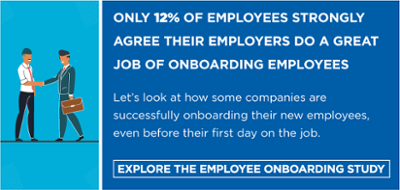
30% of job seekers have left a job within 90 days of starting.
Staffing and HR experts say onboarding new hires at an organization should be a strategic process that lasts at least one year because how employers handle the first few days and months of a new employee's experience is crucial to ensuring high retention.
Beyond the basics, what else does a new hire need?
3 Resources for New Hire Success
1. A Guide to Processes
New hires often struggle to master the various processes necessary to do their job. Some people
learn faster than others, and it’s important to take into consideration a new hire’s learning style.
When creating their onboarding and training plan, this will assist in tailoring the plan to each new
hire. Often, having the hire create a checklist for how to use a particular program is helpful. Show
them how the process works, have them take detailed notes, and then have them work off their
notes and see if they captured that process.
2. Clear Goals
When asked how their onboarding is going, many new hires reply with, “I think it's ok, but I’m not sure what my manager would say.”
New hires tend to be insecure at the best of times, so when onboarding and training goals are unclear, they don’t know how to measure their performance.
Set expectations right up front for the new hire, but from there, do weekly check-ins, quarterly check-ins, set individual goals, provide resources to achieve those goals. You will help your new hires by setting 30/60/90/120-day goals in the first two weeks. Set expectations, help them to break down goals into achievable steps and make sure they know their manager’s door is always open.
3. In-Field Coaching
It’s never too early to get your new hires acclimated to how your organization conducts calls. Set
up time for them to go on calls with a variety of sellers and exchange ideas and advice on how to
overcome objections and conversation stoppers, how to approach different types of prospects
and clients, and how to organize themselves, their calls and their notes.
Onboarding Strategies of Successful Managers
Successful managers all have one thing in common when it comes to their onboarding strategies.
Delegation.
Assigning a designated mentor is one example of delegating onboarding tasks to team
members. Having tech support set up everything in advance is another. Even the use of videos
during the pre-boarding process will make onboarding more efficient, while still helping the new
hire feel welcome and supported.
When our Talent Analysts compare the responses of new hires who had a strong onboarding process to those with little or no onboarding, the difference is startling. New hires who were thrown in with little training used the word frustrating most often.
They were confused on expectations, stressed by a first day where they were told to “come find their manager” and often felt that they were not prepared to get out there and sell. Those who had strong onboarding felt embraced by their new team, knew what to expect, and were impatient to get out there and sell because they felt ready.
For more preboarding and onboarding insights and resources, check out our Employee Onboarding Case Study.




